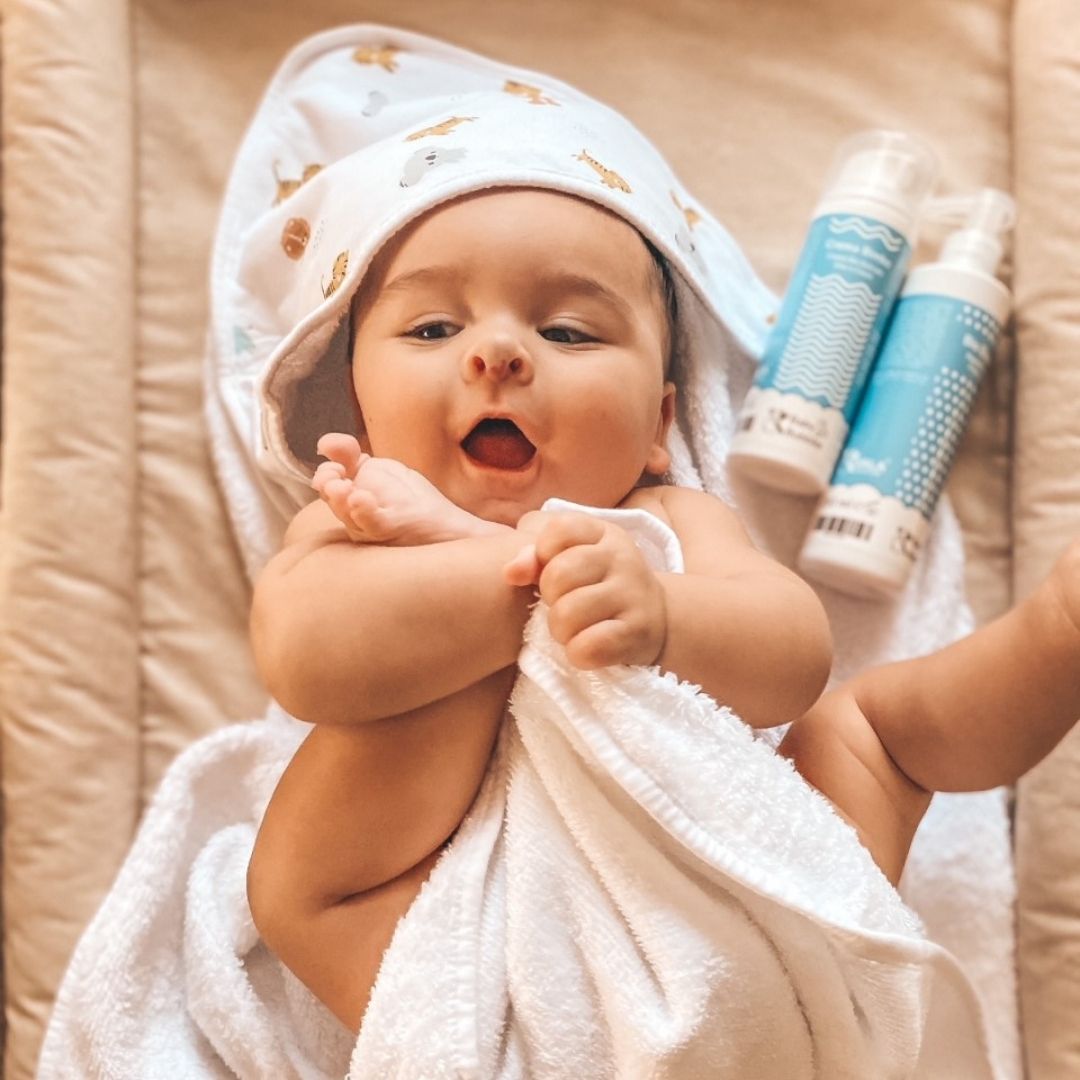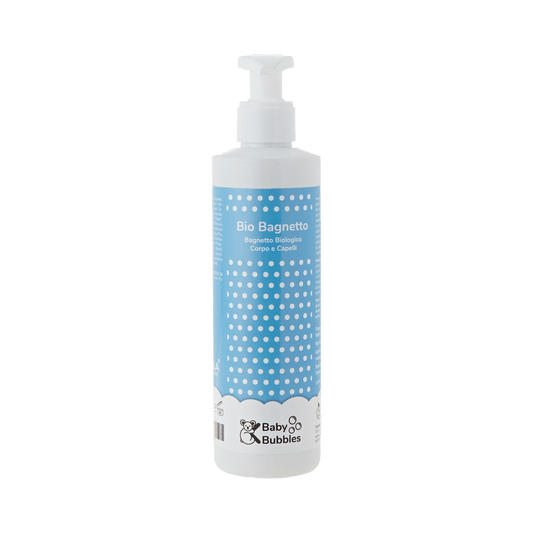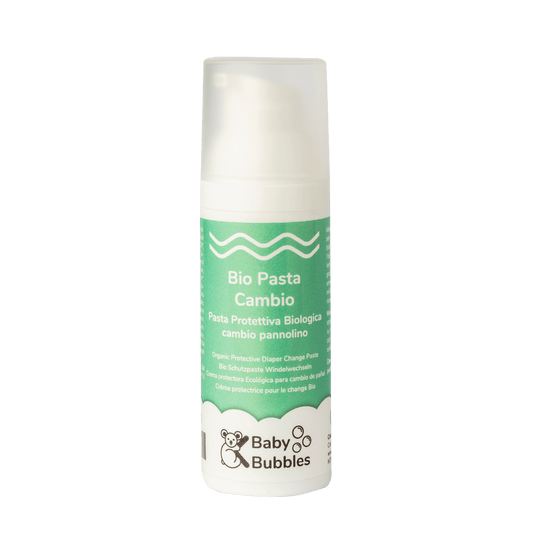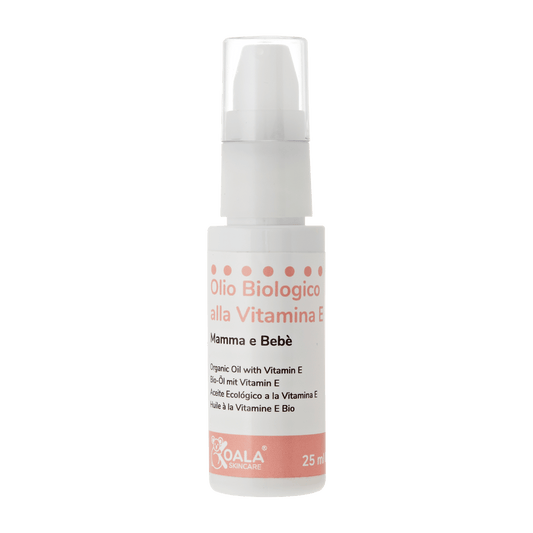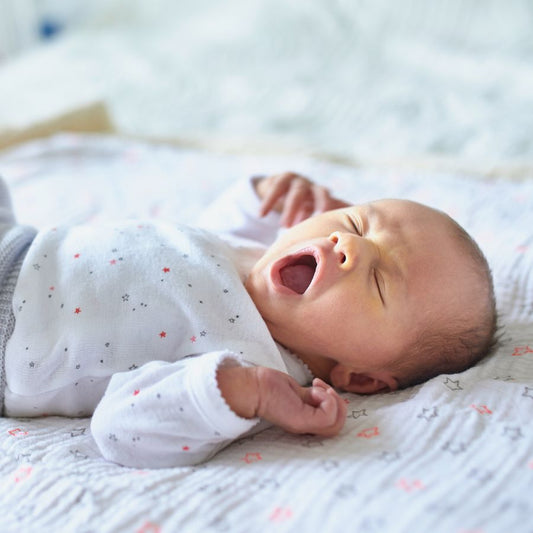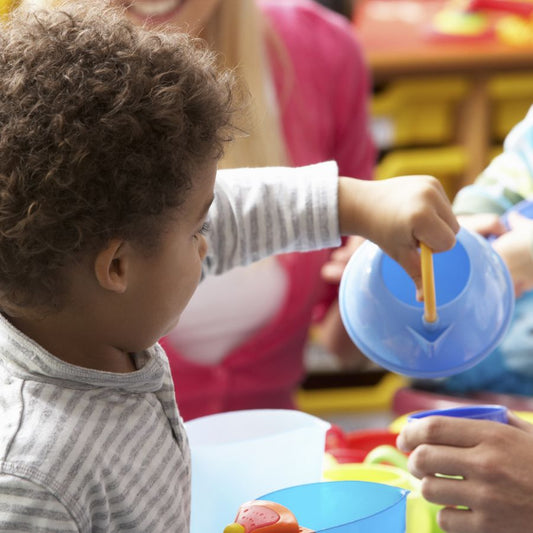In this appointment with the midwife, Healthcare Professional Martina Rossi, explains how to take care of a newborn baby’s hygiene during the first few days, in particular before the umbilical cord falls off. Read on and discover everything you need to know!
How to care for the umbilical cord
We all know that during the first few days of life a baby still has a very small part of the umbilical cord attached to its abdomen. It will dry out and then detach itself within a few days after the birth.
This is why, after their first bath, which normally takes place a few hours after the birth, a baby should not be bathed again until the umbilical cord detaches completely.
How do I care for the umbilical cord when it’s still attached to my baby? In reality, you do not have to do anything at all. You should avoid getting it wet or covering it; it’s better if you let the air at it to aid and accelerate healing.
If, on the other hand, the wound becomes infected or you notice blood or pus around it, then you can use sterile water and an oxygenated gauze to disinfect it.
How to wash your newborn baby before the cord falls off
Don't worry about not being able to bathe your little one during those initial days of life, washing them (known as ‘Topping and tailing’) gently on a daily basis with lukewarm water and cotton wool or with soft infant cleansing sponges (using a fresh piece for each different stage) is more than enough,.
Don’t use normal sponges as they are a breeding ground for bacteria; it is better to use cloths.
My advice is to use previously boiled water, which has been left to cool.
We start with their face and gently wipe the cotton wool over their eyes, around their nose and ears and around their mouth. We avoid internal areas, given they are extremely delicate. Then we move on to their chest, their stomach and then their back.
We leave areas where a higher level of bacteria is present until last. First wipe their little hands and feet, ensuring you clean in-between fingers and toes. Finally, their genitals, first at the front and then behind.
Caring for your infant’s genitals
How should you wash a baby’s genital area? Always clean the front area first and then the back, as the bottom carries more germs, and we want to avoid transferring them to the front.
For little boys, it is good practice to clean their penis from the bottom upwards, being careful of the foreskin.
For little girls, it is also important to clean inside their vaginal lips (labia).
Once the front area is clean, we move on to their bottom. You should hold your infant in your arms with their stomach facing upwards, this is to ensure, first and foremost, no water splashes onto the umbilical cord if it is still attached, and also to allow the water to flow from the front to the back.
In fact, if you hold your baby in a position where their stomach is facing downwards, gravity will force the dirty water to flow from their bottom towards the front genital area.
Bath time
A baby can have a bath once their umbilical cord has fallen off. Make sure that the room is warm, that there are no draughts and that the baby bathtub is securely fixed to the bath or shower.
Fill the tub with water, first cold and then warm, until you reach the desired temperature, and the water level is about 5-8 cm high.
Submerge the baby’s bottom first into the water, then the rest of their body, ensuring you are supporting their back and shoulders well. We can use one arm to support them and the other to clean them. Therefore, it is vital you have everything you need to hand.
It is important to make bath time both relaxing and fun for a baby. So, take your time: no clock watching or distractions.
Wash the cleanest parts of their body first and then the dirtiest parts: from their face to their chest, stomach area, back, then hands and feet and finally their genitals. You should also dry them in the same order.
It is a good idea to have a baby towel, solely for use by your baby to dry them and not to share their towel with parents.
It is important not to rub too firmly, to avoid irritating their delicate skin; it is better to dab their skin gently.
How to wash your baby's hair
My suggestion is to wash your infant's hair every few days. How? A young baby’s hair doesn’t get very dirty, apart from a little sweat. Therefore, gently massaging their scalp with a sponge soaked in lukewarm water is more than enough.
It is important to be very careful when drying their hair: you must ensure their hair is completely dry, but you cannot use a hair dryer or rub their heads with towels (due to their soft spots). Dab their hair lightly and gently until hair feels dry.
How to treat Cradle Cap
Many infants suffer from cradle cap. It is a common skin disorder which appears during the first few months of life.
In the evening, before going to bed, massage the affected area of skin with almond oil and leave it on overnight. The following morning try to gently remove any scales with a soft bristle brush.
How to cut your baby's nails
I suggest cutting your baby's nails immediately after a bath as their nails are much softer then. You can use rounded tip scissors or a very fine-grained paper nail file. Between both of these, we definitely prefer the file, as it is easier and gentler than using scissors.
Nails should be cut straight across without sharpening the edges, as babies often bring their little hands to their faces and may scratch themselves.
What do you need for your baby's daily hygiene regime, from bathing to nappy time? You need products which are gentle on your infant's delicate skin, protecting it from any redness and irritation. Discover our Organic Skincare range for both mum and baby!
Martina Rossi, a Healthcare Professional in Midwifery
A healthcare professional midwife, she graduated from the Marche Polytechnic University and then undertook a two-year master's degree in independent midwifery management of physiological pregnancy at the University of Modena and Reggio Emilia. She currently works and specialises in the field of pregnancy, assistance during labour and birth, and support with breastfeeding. She also deals with pelvic floor rehabilitation, obstetrical services such as tampons and pap smear tests, as well as obstetric consultations.

